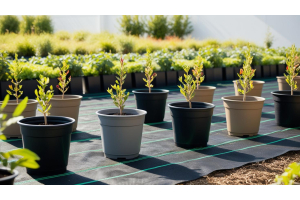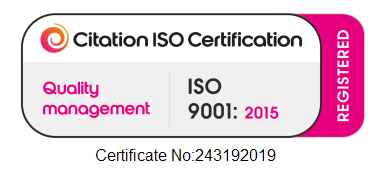Navigating the Impact: Unraveling the Consequences of April's Record-Breaking Rain on Horticulture

April's record-breaking rain has significantly impacted horticulture, affecting yields. The excessive rainfall has disrupted the delicate balance required for optimal plant growth, leading to concerns about the future of horticulture in a changing climate. This article will explore the consequences of excessive rain on horticulture, farmers' challenges, and strategies to mitigate the effects. Additionally, we will provide expert advice on adapting horticulture practices to changing weather patterns and resources for horticulturists to stay informed and prepared for extreme weather events.
Understanding the consequences of excessive rain on horticulture
Excessive rain can have detrimental effects on horticulture. One of the primary consequences is the impact on yields. Excessive moisture can lead to waterlogged soil, which inhibits root development and nutrient uptake. This, in turn, affects the overall health and productivity of plants. Additionally, prolonged periods of rain can promote the growth of fungal diseases, such as root rot and powdery mildew, further compromising yields.
Another consequence of excessive rain is the delay in harvest. Wet conditions make it challenging for farmers to access their fields and harvest crops at the optimal time. This delay can result in losing quality and market value, as crops may become overripe or susceptible to damage from pests and diseases. Late harvests also disrupt the planting schedule for subsequent crops, creating a domino effect on the entire horticulture cycle.
Impacts on horticulture yields
The impact of excessive rain on horticulture yields must be considered. Yields can be significantly reduced due to waterlogged soil, nutrient leaching, and increased disease susceptibility. Waterlogged soil deprives plants of oxygen, leading to root asphyxiation and stunted growth. Additionally, excess water can wash away essential nutrients from the soil, leaving plants malnourished and weak.
Furthermore, the increased humidity caused by excessive rain creates a favourable environment for fungal diseases. Fungi thrive in damp conditions and can quickly spread, infecting crops and causing significant damage. This can result in a decrease in both quantity and quality of the harvested produce. Horticulturists must be vigilant in implementing preventative measures, such as crop rotation, proper drainage systems, and disease-resistant varieties, to mitigate the impact on yields.
Challenges faced by horticulturists due to late harvest
- Financial losses due to delayed harvest. We rely on timely harvests to maximize profits and meet market demands. When crops are left for longer, they are at a higher risk of spoilage, reducing their market value.
- Supply chain disruption. The delay in harvest disrupts the supply chain, affecting the availability of fresh produce for consumers.
- Delaying planting windows. The delay in harvesting can lead to a shorter window for planting subsequent crops, potentially affecting the overall productivity and may result in increased labour costs to make deadlines.
Late harvests pose numerous challenges for farmers. Firstly, the delay in harvesting crops can lead to financial losses. Farmers rely on timely harvests to maximize their profits and meet market demands. When crops are left in the field longer, they are at a higher risk of spoilage, reducing their market value. Additionally, the delay in harvest disrupts the supply chain, affecting the availability of fresh produce for consumers.
Late harvests also create logistical challenges. Farmers must navigate muddy fields, making it difficult and time-consuming to access the crops. This can result in increased labour costs and delays in other farm operations. Moreover, the delay in harvesting can lead to a shorter window for planting subsequent crops, potentially affecting the farm's overall productivity.
Strategies for mitigating the effects of excessive rain on horticulture
While excessive rain presents challenges, there are strategies that horticulturists can employ to mitigate its effects. Implementing proper drainage systems is crucial to prevent waterlogging and ensure the health of plants. This can be achieved by installing drainage tiles, contouring fields to promote water runoff, and creating raised beds in areas prone to flooding.
Crop selection is another crucial strategy. Choosing varieties more tolerant of excessive moisture and diseases can help minimize the impact on yields. Additionally, implementing crop rotation practices can break the cycle of diseases and pests that thrive in wet conditions. This allows for healthier plants and reduces the risk of yield loss.
Moreover, horticulturists can utilize protective structures such as greenhouses or high tunnels to shield crops from excessive rain. These structures provide a controlled environment, protecting plants from excess moisture and allowing optimal growth. Investing in such infrastructure can be a long-term solution to mitigate the effects of changing weather patterns on horticulture.
Expert advice on adapting horticulture practices to changing weather patterns
To adapt horticulture practices to changing weather patterns, staying informed and seeking expert advice is essential. Local agricultural extension services or horticulture organizations often provide resources and guidance tailored to specific regions. They can offer information on weather trends, best practices, and technologies to cope with the challenges posed by excessive rain.
Collaborating with researchers and scientists in the field of horticulture can also provide valuable insights. Based on their expertise and ongoing research, they can offer innovative solutions and techniques. Experimenting with new approaches, such as precision irrigation systems or genetic modifications for drought and disease resistance, can help horticulturists adapt to changing weather patterns and ensure the sustainability of their operations.
Resources for horticulturists to stay informed and prepared for extreme weather events
Staying informed and prepared is crucial for horticulturists to mitigate the impact of extreme weather events. Several resources are available that provide valuable information and support. Weather forecasting services can provide accurate and timely updates on rainfall patterns, allowing farmers to plan their activities accordingly. Additionally, online platforms and forums dedicated to horticulture offer a wealth of knowledge, sharing experiences and best practices from experts and fellow practitioners.
Agricultural research institutions and universities often publish scientific papers and studies on horticulture and climate change. These resources can provide valuable insights into the latest research and advancements in the field. Furthermore, attending conferences, workshops, and seminars focused on horticulture and climate resilience can help horticulturists stay updated on the latest trends, practices, and technologies.
Conclusion and the future of horticulture in a changing climate
April's record-breaking rain has highlighted the vulnerability of horticulture to changing weather patterns. The consequences of excessive rain on yields and the challenges farmers face due to late harvests underscore the need for adaptation strategies. By implementing measures such as proper drainage systems, crop selection, and protective structures, horticulturists can mitigate the effects of excessive rain and ensure the sustainability of their operations.
Horticulturists must stay informed and seek expert advice to adapt their practices to changing weather patterns. By collaborating with researchers, utilizing available resources, and attending relevant events, horticulturists can stay ahead of the curve and make informed decisions. With the right strategies and continuous innovation, the future of horticulture in a changing climate can be one of resilience and growth.










